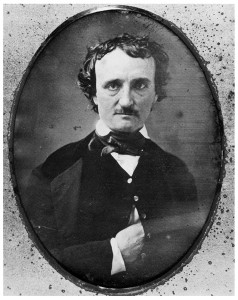by Jack El-Hai, Wonders & Marvels contributor
Like many of my colleagues at Wonders & Marvels, I depend upon publicly accessible archival collections when I research my books and articles. For my forthcoming book The Nazi and the Psychiatrist: Hermann Göring, Douglas M. Kelley, and a Fatal Meeting of Minds at the End of WWII, for example, I used public archives in New York, Maryland, and California to supplement the research I conducted in a private family archive. Those public records added crucial context and detail.
I mention this to explain why I regard the theft of materials from archival collections as a heinous crime. When crooks steal valuable goods from archives, they remove information and ideas from circulation and damage the trust that archivists place in the visitors who arrive to examine historical materials.
This year marks the 40th anniversary of an infamous archival heist that has never been solved. In August 1973, workers at the University of Virginia’s Alderman Library began noticing items missing from their celebrated collection of American literary manuscripts and artifacts. The archive held manuscripts of unpublished novels by William Faulkner, Louisa May Alcott’s bookkeeping ledgers, and letters written by U.S. presidents, among other treasures. Over several months, somebody — or perhaps more than one person — used a key kept in a locked cabinet to gain access to the library’s archival strong room: a chamber located behind several bolted doors, which a newspaper reporter called “the vault room far down among the deepest of the library structure’s recesses.”
As the Virginia archivists inventoried the loss, they found missing such precious items as letters by Thomas Jefferson, Francis Scott Key, and George Washington; papers formerly belonging to Alexandre Dumas, Charles Dickens, Aaron Burr, Samuel Clemens, and Robert E. Lee; a first-edition printing of Edgar Allan Poe’s first work, a poetry collection that included “Tamerlane”; and another first edition of Poe’s Tales of the Grotesque and Arabesque. Perhaps the most sensational loss was the disappearance of an irreplaceable daguerreotype portrait of Poe, nicknamed the “Stella,” that had been with the University of Virginia (Poe’s alma mater) since 1921. Forty-five artifacts vanished with an estimated value of $100,000 (at least $525,000 in today’s dollars).
Authorities took the unusual step of publicizing the embarrassing theft in the hope that some artifacts might turn up in the open market. None of the missing items ever did, sparking fears that the thieves may have destroyed their loot.
Decades later, the loss of these artifacts from public use still resonates as a terrible blow to scholarship, readership, and American history. Let’s hope that someday they will return home. Until then, we can only guess at the hidden stories they could have told.
Recommended reading
Associated Press. “Rare Papers Are Missing From U.Va.” The Free-Lance Star (Fredericksburg, Va.), December 21, 1973.
Deas, Michael J. The Portraits and Daguerreotypes of Edgar Allan Poe. University of Virginia, 1989.
Kelly, Brian. “Valuable Manuscripts Taken From University Library Vault.” Sarasota Herald-Tribune, April 28, 1974.

